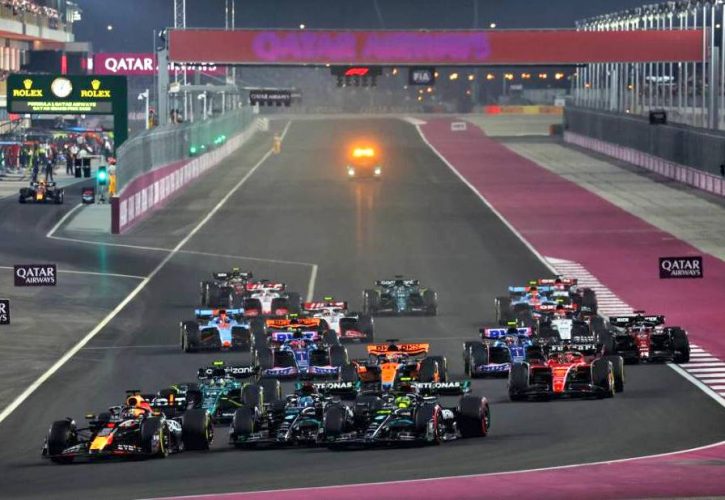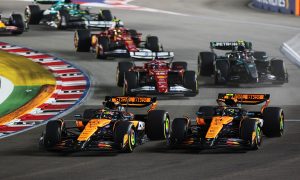
Jenson Button believes the prolonged high G-forces sustained by drivers in the Qatar Grand Prix were the biggest factor impacting their physical resistance at Lusail.
The extremely hot and humid conditions in which the race took place led to the near collapse of several drivers after the event.
Williams charger Logan Sargeant didn’t make it to the checkered flag, the young American forced to retire with 17 laps to go due to a heatstroke, while Alpine’s Esteban Ocon was sick in his helmet.
The drivers’ ordeal has compelled the FIA to investigate how it can mitigate the effect of the grueling conditions in the future and improve the drivers’ resistance.
But Button reckons that while the extreme conditions certainly took their toll on drivers, the venue’s heavy G-forces were a key aggravating factor on the day.
“While being elite athletes, they should not be expected to compete under conditions that could jeopardise their health or safety,” commented Button, speaking at last weekend’s Petit Le Mans event at Road Atlanta.
“I didn’t feel how hot it was, but one of the bigger problems with Qatar is that these guys are at high G all around the track. The heat… I mean, we’ve had a lot of hot races in the past.
“But I think the biggest issue is for them that their bodies were at such high lateral G, for so long, that you can’t breathe. They’re not able to get the oxygen into the blood, so that’s the biggest issue.”

Button admitted that there are currently limited solutions to help drivers cope with extreme conditions, adding that if his F1 colleagues don’t speak up, then changes are unlikely.
“IndyCar has a closed kinda cockpit, and it’s clearly hot in those cars, and I know they don’t have power steering, so I know it hurts them too,” he added.
But then they don’t pull them same G forces as an F1 car pulls [on a road course].
“When I raced NASCAR in Austin, I almost stopped in the race. I said to the team, ‘I can’t do this anymore’ – I was just so hot. So different cars have different issues with heat.
“Until drivers speak up, they won’t change it.
“I remember racing F1 in Malaysia, when my water bottle broke, I had big issues in the race. You start shivering and then you lose your vision.
“Then it gets dangerous, so I’ve felt how bad it can be.”
Keep up to date with all the F1 news via Facebook and Twitter







